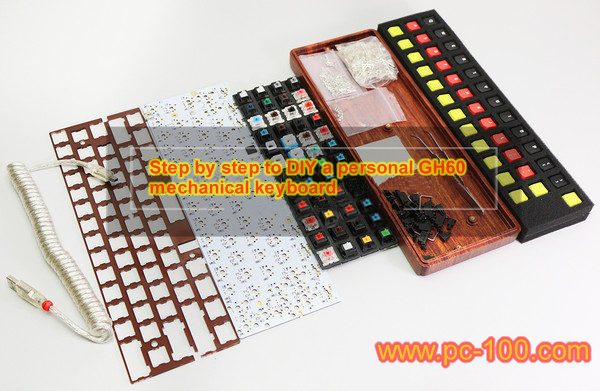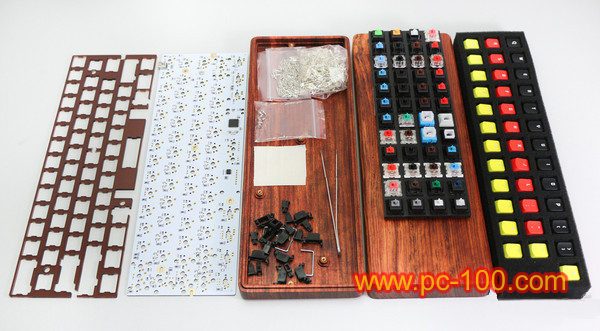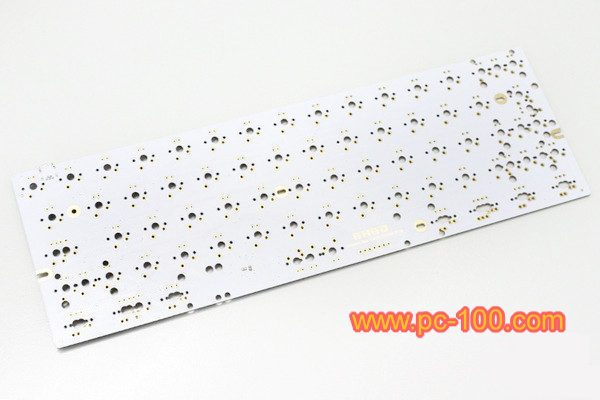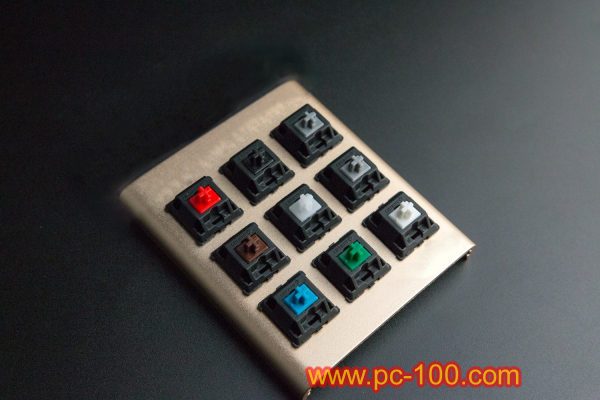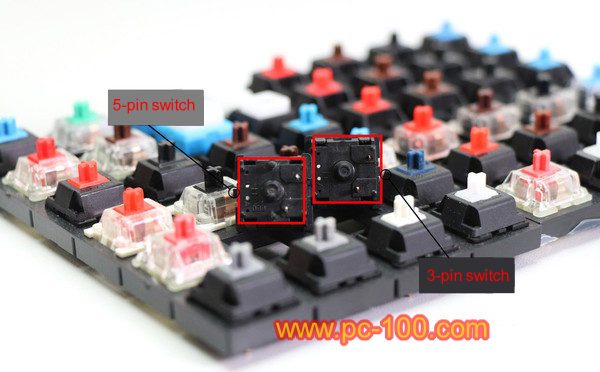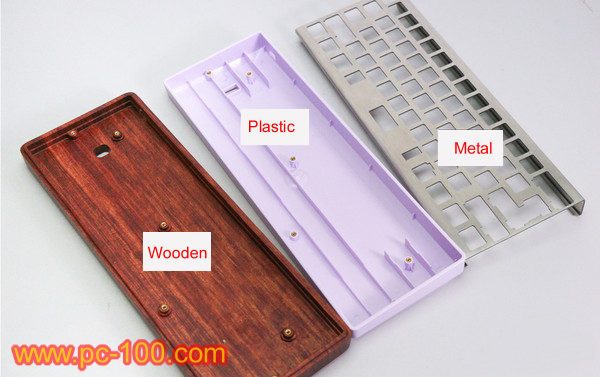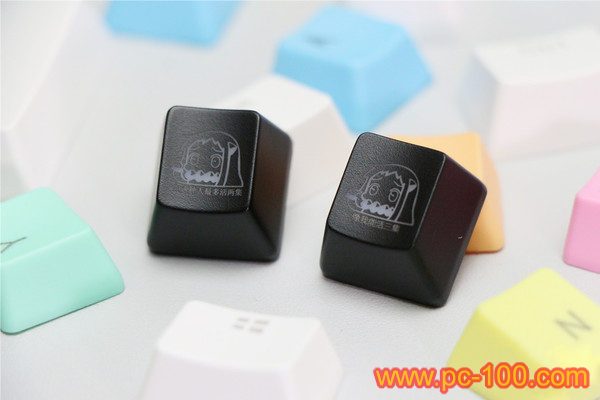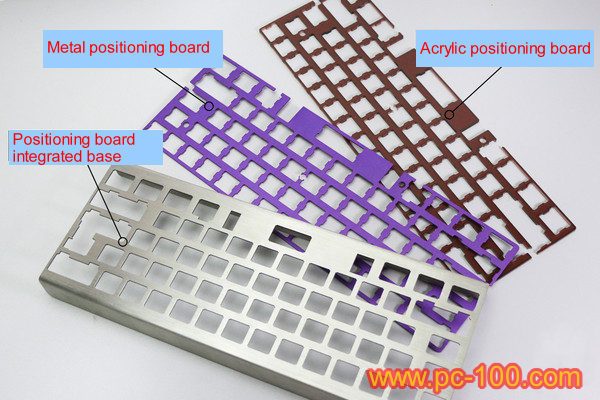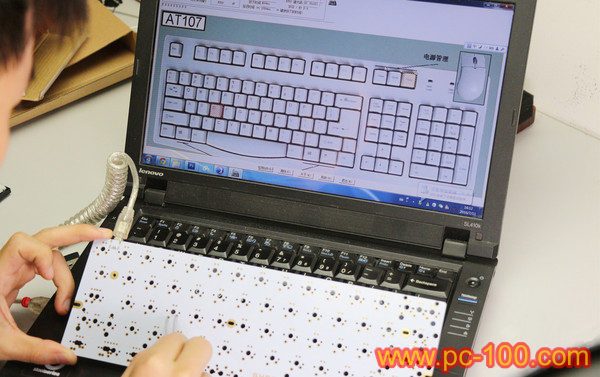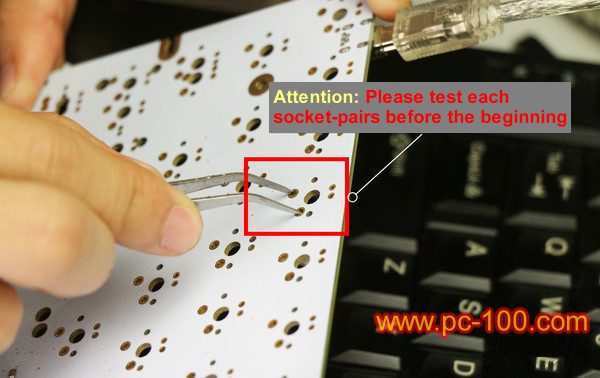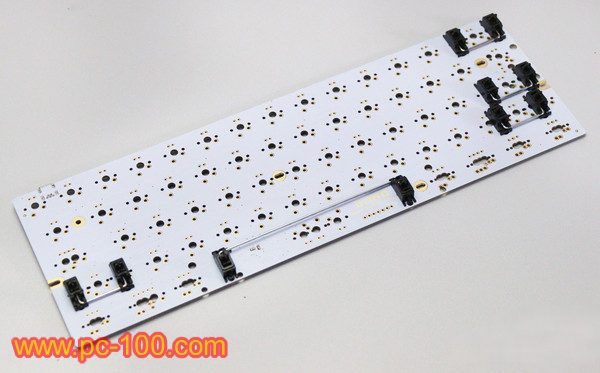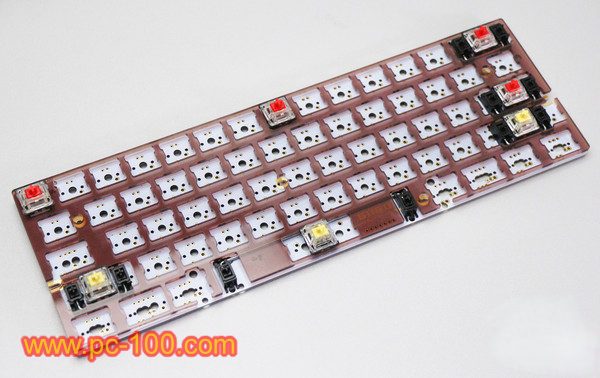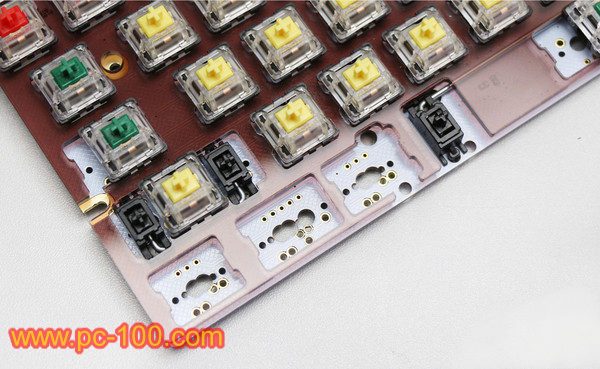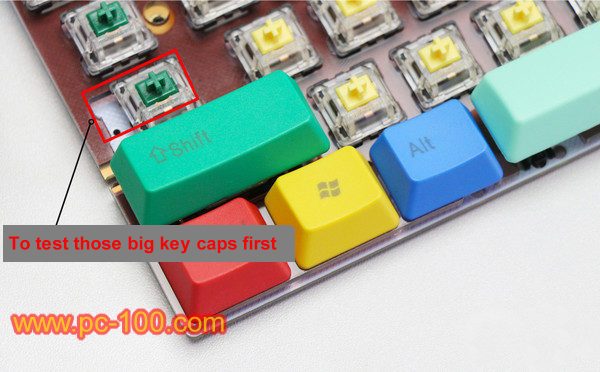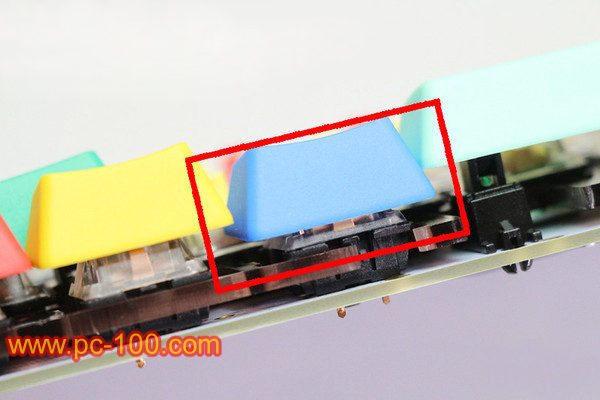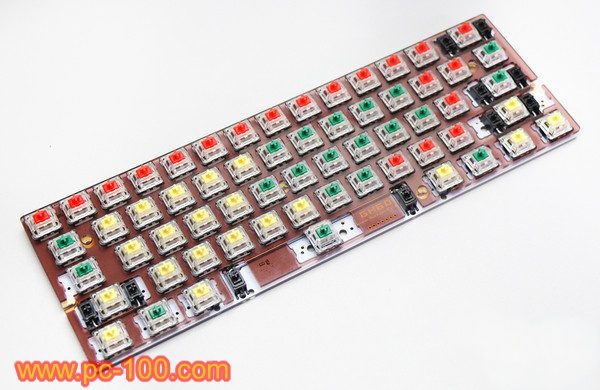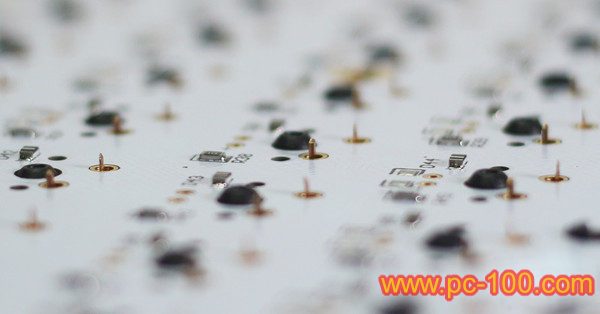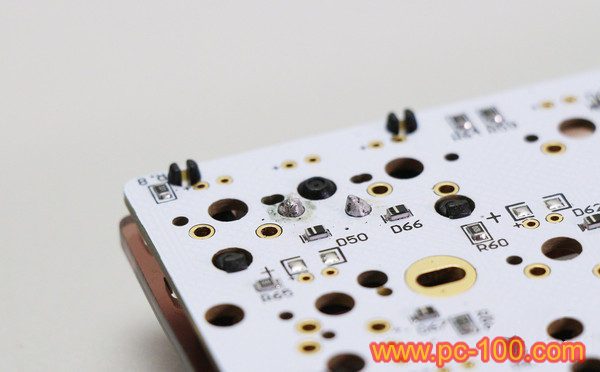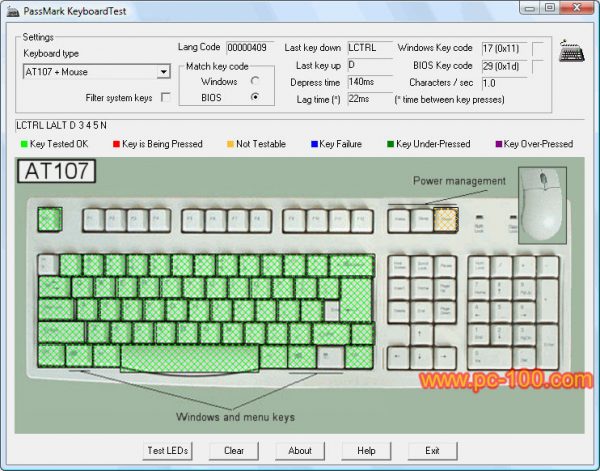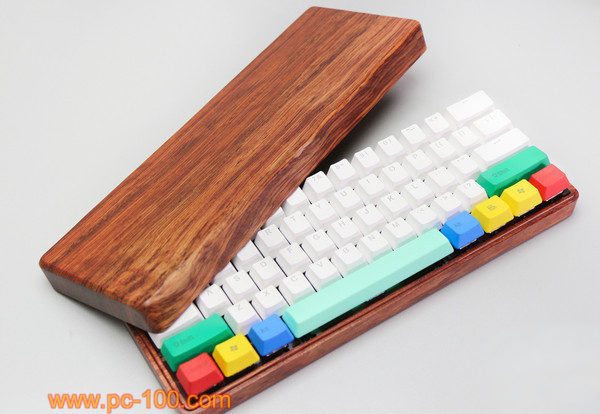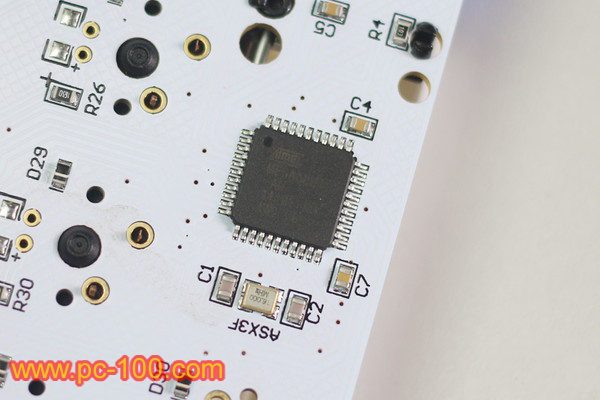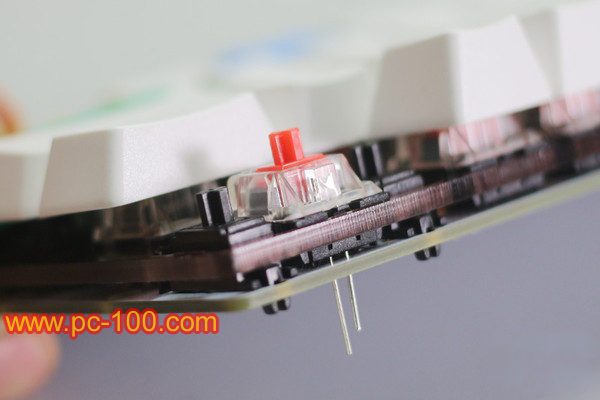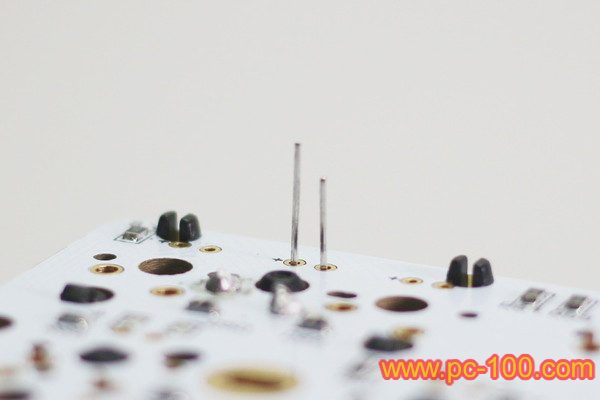
Step by step to DIY a personalized GH60 programmable mechanical keyboard
This topic teaches you how to DIY a GH60 programmable mechanical keyboard for your private use.
We’ve introduced GH60 programmable mechanical keyboard in 2 released topics:
GH60, a personalized DIY mechanical keyboard, professional player’s choice
and
GH60, a DIY mechanical keyboard, professional player’s choice–Part 2(continued)
In this topic, we will introduce some skills of DIY a GH60 programmable mechanical keyboard step by step, beginners may read some experience here to reduce errors and avoid detours.
All the needed for DIY a GH60 mechanical keyboard
Components needed
Keyboard base, PCB, switches, keycaps USB cable and switch balance auxiliaries (stabilizer springs, seller may provide balance auxiliaries when sell you the keyboard PCB), fixed screws and cushions may be bought with the keyboard base. As to positioning board and LED lamps, they are optional.
Keyboard PCB
PCB is crucial to a GH60 keyboard, you should ask these questions yourself before buying a GH60 PCB:
i)Do you need LED lamps on the keyboard?
ii)Do you need a switch pull-and-plug PCB?
iii)The layout of your GH60 keyboard.
Keyboard switches
There are many types of switches for Gh60 mechanical keyboard, may be a switch tester can help you test the tactile feel of a switch and choose your switch-combination experiencedly.
If you didn’t have experience of switches, Cherry switches are tested to be the best switches by most users but are at the most expensive price, Cherry switches are with 3 pins or 5 pins, 5-pin Cherry switches are seldom found in the retail market now, and also, PCB with 5-pin sockets is not popular on the market. If you didn’t accept the expensive price of Cherry, Kailh, Gateron or Huano, Greetech can be for your choice too.
Keyboard base
Several materials for GH60 mechanical keyboard base, metal, plastic, wooden and so on. From my view, wooden means artistic, metal means means scientific while plastic means serious, popular plastic materials used to make keyboard base include PBT, ABS and acrylic.
Keycaps
Connection cables
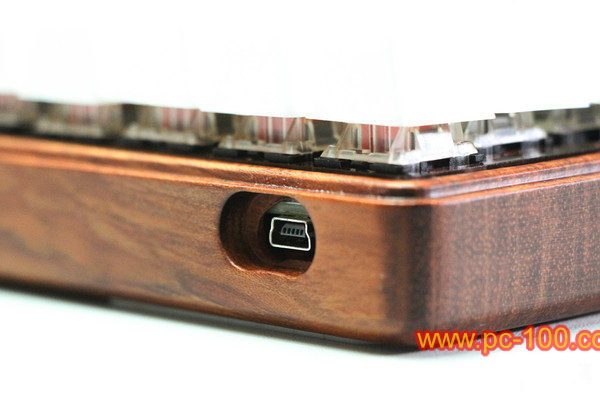
Mini USB port on the PCB of GH60 mechanical keyboard, some PCBs are with Type C port, you should buy your connection cable according to the connection port of your PCB
Positioning board
Step by step to assemble a GH60 mechanical keyboard
STEP 1: Test the PCB before beginning
Download and install “PassMark KeyboardTest” software in your PC and connect the PCB with your PC, use a metal tweezer to connect each pair of sockets, confirm no problem for all pairs of sockets.
STEP 2:Assemble the stabilizer spring (switch balance auxiliary)
The stabilizer spring is with very simple structure, even a beginner may assemble it.
STEP 3:Fix the positioning board
Plug some switches at their typical positions, for example, on the boder or at the 4 corners, then fix the positioning board, then plugging switches would be very easy.
STEP 4: Plug the switches
When the positioning board was fixed, positioins for plugging switches was also confirmed, plug the switches on the first 4 lines firstly, the last line of switches include “Enter”, “Shift”, “Ctrl”, “Alt” and etc., some horizontal tolerances were deliberately designed for these keys’ positions to adapt to different size of key caps.
If you’ve bought the key caps, you may test the keycaps before soldering the switches, ensure no keycaps’ interference.
Confirmed no interference of keycaps, plug all switches, you may plug several types of switches on your GH60 mechanical keyboard according to your personal favorite.
STEP 5: Soldering switches on the PCB (If your PCB is with plug-and-play sockets for switches, just skip this step please!)
After all switches were plugged and switch-arrangement were confirmed, you may begin to soldering the switches to PCB. this is the most important
step to DIY a GH60 mechanical keyboard, pay attention to the following when soldering:
–Don’t heat a soldering point for long time, PCB may be damaged by long-time heating.
–Don’t welding too much or too little tin at a piont.
–Cone-shaped and enriched tin is a good quality welded point.
STEP 6:Check and test
Check that if there were some switch pins missed soldering or faulty soldered, then connect the keyboard with PC, press every key to test. If everything is OK, install the screws and keycaps.
Oh, some players may be interested in LED back light effects, there are some extra steps to be inserted into above steps:
STEP 0: Something should be confirmed before buy GH60 keyboard components
You must know if the PCB support LED back light effects, which kind of LED lamps are supported? (you must take PCB controller in to account and ensure the stability of power supply for the LED lamps).
STEP 4-2 LED lamp arrangement
If your PCB support RGB back light and support progammmable backlight effects, you may just skip this step. Otherwise, you may design your LED color arrangement before soldering LED lamps.
Please pay attention to positive pin and negative pin when plugging the LED lamps, generally, the longer pin is positive and should be soldered to “+” on the back of PCB, you may connect the PCB with a PC to test if all LED were correctly plugged.
STEP 4-3 Solder the LEDs to PCB
Disconnect the PCB with PC, begin to welding.
Tips: Use your left hand to hold a pin (e.g.positive pin ) and solder wire, soldering iron was hold by right hand and hold onto another pin (e.g.negative pin ), left hand approach solder wire to the soldering iron to finish welding negative pin, then change to weld positive pin.
Check welding defects after all LED lamps were soldered, then trim off extra parts of the LED pins.

